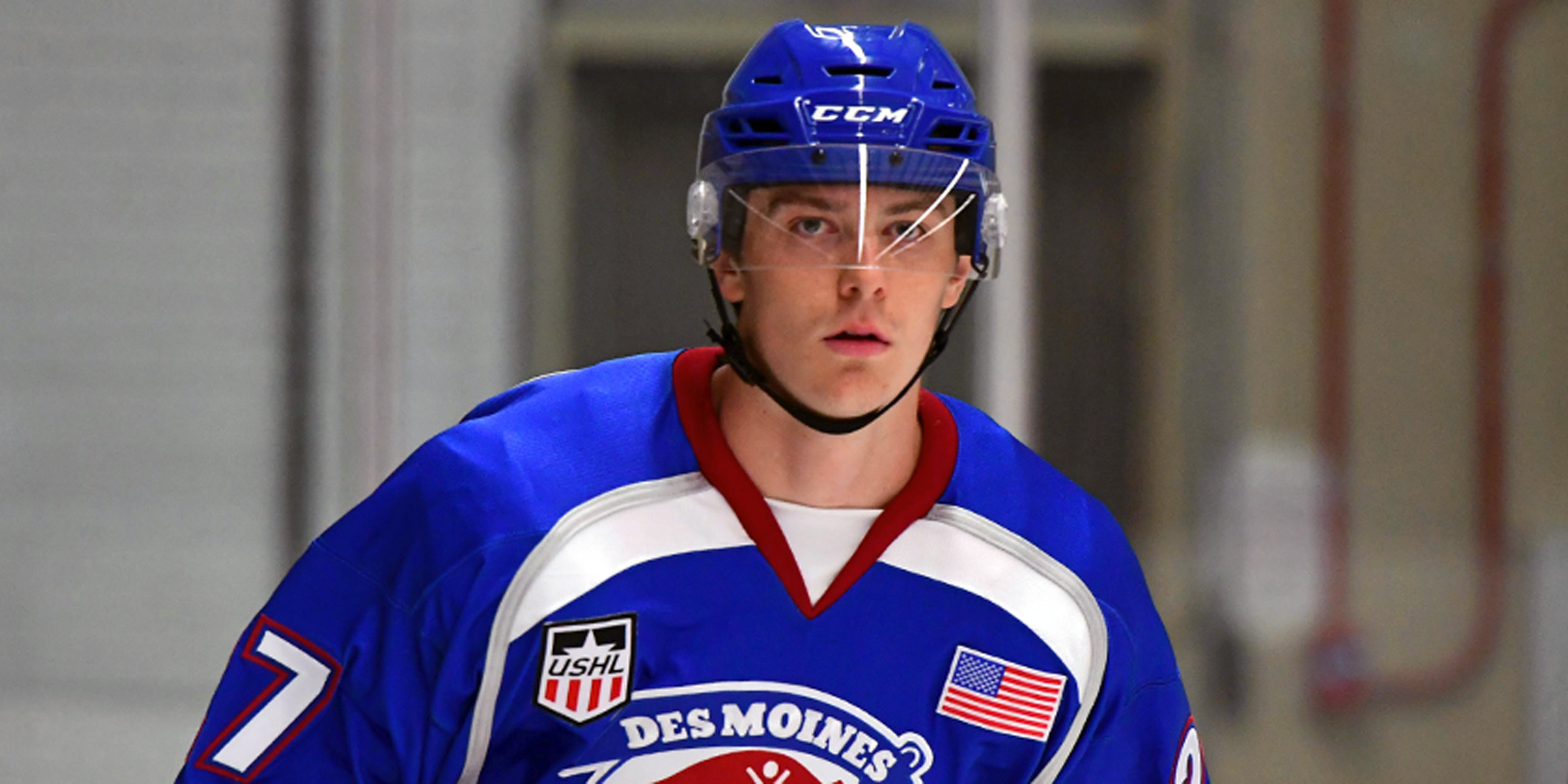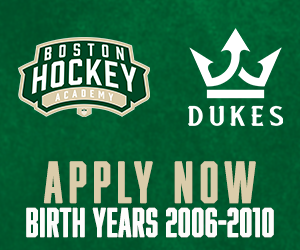Words themselves can take on different meanings, it’s the context that gives the word its place. The term “commitment” can be an obligation; I can’t go to the game I have another commitment. It can also be a vow, I am committed to be with my wife for the rest of my life. Or it could be a pledge or promise; the football player is committed to being the best he can by training hard every day. However, in the context of NCAA recruiting, especially as it relates to men’s hockey, commitment is a loose term.
This past week the number of de-committed players still in high school, juniors or prep school exceeded 60, which is significant for a sport that only has 60 Division 1 programs. Last season there were just shy of 500 incoming freshmen at the NCAA Division 1 level. So, that means that if we expect those numbers to remain constant, then roughly 12% of the committed players will either de-commit or switch their commitments.
There have been countless arguments on every side of this issue. Here at NZ we will look at the issue from the perspective of the players, the coaches and its impact on the game.
Before we delve into the four main contributing factors, lets first identify if this is even a problem.
12% isn’t a huge number, but it has had a significant impact in the competitive amateur hockey markets. We have already seen a shift from player development style camps and clinics to showcase tournaments because the focus has shifted from individual improvement to exposure by midget, prep, juniors and NCAA/CHL scouts.
The worst-case scenario of de-committing form the player’s perspective is banking on a college hockey scholarship and getting the plug pulled late in the game. That player may have had other opportunities if they weren’t committed and may have to end up paying full tuition at another school. The worst-case scenario from the coaches’ perspective is when a player who they have verballed a full scholarship to de-commits late in the game. They may have passed on other players or moved pieces around to accommodate that scholarship and to lose it late in the game can really hurt a team’s recruiting class. Given the dates of the early and late signing periods, schools and players are somewhat protected from this but not every school is a scholarship school and not everyone plays the game fairly.
The best-case scenario for both parties are the same, the player and the school decide that this isn’t the right fit and mutually decide to part ways on their prior commitment. This can happen with a new coaching staff comes into play or simply a player realizes they want to play at another school and the coaching staff realizes the player doesn’t fit their teams style.
Therefore, we can’t make the blanket statement that “de-commitments” are always bad or that they are the players fault or the coaches fault. In some cases, it is the best case scenario for all parties invovled. However, the rise of de-commitments in the past few years and the change in recruiting culture changes are negatively impacting the sport at all levels.
With that being said we will look at four contributing factors to the rise in de-commitments.
- Early Recruiting
This may be the single largest problem that college hockey faces in the upcoming years. Players are verballing committing to NCAA programs at the ages of 13, 14, 15 and 16. These are very common and have completely shifted recruiting focuses among college coaches over the past 10 years.
Youth players are being asked to make decisions as it relates to their future when they don’t have the full scope or ability to make an informed decision. Most have no idea what they want to study, what their NHL likelihood will actually be, what size of the school they are looking for, the location of best fit, etc. It isn’t until these players are older, more informed and have endured enough experiences to really know where they want to go to school, what kind of coaches work best for them, where they want to live or even if the school has the major they are interested in.
From the coaches perspective, they also don’t have enough information or perspective to know for sure if that player is going to be good enough or play the right style of game to fit their team. Once the player matures and grows into his game, coaches will then be able to evaluate the likelihood of the player panning out, what role he could play for their team, what scholarship situation is and where that player fits in, etc. In some cases the player didn’t develop the way they had hoped and is no longer good enough. In some cases the player is good enough but not worth the scholarship they verbally offered and they cut the chord. Or sometimes the player just isn’t the right fit in regards to their style of play and what they bring to game. Lastly, we are seeing the repercussions of coaching changes (which are abundant) on recruiting classes. There are over 100 committed players on our recruiting class rankings who committed to a coach who is no longer at the school. The most recent coaching moves could trickle a major shift in recruiting as we saw with highly touted prospect Kale Howarth de-committing from Northern Michigan to UConn this past week.
Currently, early recruiting makes sense for both the player and the coaches, despite its potential negative repercussions, trick down effect and its high level of uncertainty. The reason is simple: the risk vs. reward favors both parties. There is very little risk in committing at 14, 15, 16 for the player because they could always switch their commitment or “upgrade” if they improve. The reward is they have a place to play, they are “committed” which gives them preferential treatment in terms of drafts, all-star teams, etc. From the coaches perspective, there is very little risk to them because it’s a verbal commitment. If the player doesn’t develop the way they hope, they can simply de-commit them without breaking a single rule. There is also no limit on the number of players they can commit to so they don’t risk losing one player because they early committed to another. The reward for them is locking up a talented player with upside and setting up their recruiting classes for the future. They can also monitor those players and have an impact on their development by suggesting either directly or through their agent where the players should play, what coaches in their area are good, where they should train, etc.
We are not condoning early commitments and we are not saying it’s a positive because we think it has a real negative impact on youth hockey and high school hockey; we are simply saying it makes sense why players and coaches do it and until that is changed, it will always occur.
- The CHL Impact
Every league is trying to prove that they are the best path to the NCAA or CHL or NHL, etc. The truth is college hockey and the CHL have always been in competition for top prospects and that continues to play a role in the NCAA recruiting process. The WHL Draft for example occurs at ages 14/15 and the OHL and QMJHL occur at ages 15/16. So the CHL, in some respects, forces the NCAA’s hand to offer players before they may be ready to in order to entice them to stay in the NCAA system. This leads to what NZ calls “Upside Scouting” which comes with considerable risk. Upside scouting is a system based on projecting players 3-4 years down the road based on a limited set of viewings or a limited amount of player attributes. “Less than 15% of every NHL Draft Class will make a career in the NHL and those are 18-20 year olds,” remarked Director of Scouting Brendan Collins. “Imagine the percentages for projecting 14, 15, 16 year olds. It’s not an accurate assessment strategy.” If the CHL is telling a high end 16-year-old that he can play on their team that is pretty attractive offer and colleges have to act immediately or they’ll lose that player.
- The Strong-Arm Tactic
The strong-arm tactic relates to coaches giving verbal offers attached to a time frame. A common example would be a coach telling a prospect that they have a full scholarship offer from that day until the end of the month. After that time the school is going to offer the scholarship to someone else. Because of the speed of recruiting today, if a coach finds an unknown prospect he may want to get him “verballed” before other schools know about him. However, when that occurs with 14, 15 and 16-year-old prospects it could lead to rushed or uninformed decisions where the player could find out later the school isn’t the right fit. Vis versa the school could find out he isn’t actually the player they thought he was and de-commit him as well. The point is strong arming does occur, it’s not illegal, it can work for teams but it is also a contributing factor to higher rates of de-commitments.
- Family Advisors/Agents
While family advisors and agents were intended to be a solution to the complexity of recruiting, they have in some way, created a bigger problem. When it comes to the top 10% of players, most all of them have agents or “family advisors” as the NCAA coins it. These advisors are helping the family make decisions, but in reality, they are talking to schools and trying to place kids in programs. What this creates is a conversation, behind the scenes, between a 14-year-old and his advisor that then is relayed to the NCAA coaches. Coaches are not allowed to directly contact the player so the third party advisor allows for communication through them which keeps both the player and school in NCAA compliant. In reality, it’s a lot of adults coming together to make decisions for a young player who doesn’t even know what they want to study or where they want to live.
This third party in the recruiting process is not new but its grown significantly in the past 15 years. Back in the 70’s, 80’s and even the first half of the 90’s recruiting was between the player and the coach. However, this third person in the recruiting experience can backdoor NCAA rules by playing the middle man between the coach and younger prospects. However, these agents can have their own motives and influence the players decision. We have several cases of players who have committed to schools that may be considered bottom or mid-level programs and once they go to juniors and start proving themselves their agents start “shopping them” around to higher level programs. The term “shopping” refers to agents asking coaches informally if they have interest in their player and if they have scholarship money to make the deal. Once they get a few sniffs they’ll relay that to the player and then the player isn’t guilty of directly talking to other schools or dishonoring his commitment.
In fairness to the advisors, we are not pointing the blame in their direction. In most cases, the advisor is doing what his clients ask him to do, which is their job. Also, advisors have filled information voids and helped players navigate through the often-complicated NCAA recruiting process. So, to say they have created this issue would be unfair, but they are on the front lines of it.
Conclusion: There are ways to “solve” this problem and many of those ideas are being circulated in other sports to end early recruiting, end the verbal commitment and pull for an earlier signing period. An unlikely alternative could be to make scholarship offers transparent. “We couldn’t say this with absolute certainty because the information comes from a multitude of sources (NCAA coaches, agents/advisors, junior coaches, etc.) but if we assume everyone is telling the truth in an accurate manner than our data shows that there are 11 NCAA programs who have more scholarship money offers than room to accommodate them,” remarked NZ President Steve Wilk. Now this isn’t news to people closely following the situation and there are reasons for “over committing” due to early pro signings, one and done players and the potential for transfers, de-commitments, etc. “Our data shows about 12% of the D1 NCAA committed players will de-commit at some point, so if you have 40 players on your current verbal list, you have to factor in that about 4 of them on average will de-commit.”
We have provided a list of our running total of de-committed players who have yet to play college hockey. Some of these players de-committed years ago, some just a few weeks ago. You will see names on here like Oliver Wahlstrom who was the youngest kid to commit in D1 NCAA history who has since de-committed from Maine and is slated to attend Harvard in 2018. There are other players (12 in total) who we have heard have de-committed but they are still listed as committed on their league/team page or on other media outlets so until we hear definitively that they are de-committed we leave them off the list.
NCAA Division 1 De-Commitment Tracker
| Player | Original |
New |
| Tony Stillwell | Wisconsin |
Brown |
| Providence |
North Dakota |
|
| North Dakota | Niagara | |
| Connor Sych | St. Lawrence |
Uncommitted |
| Quinnipiac | Uncommitted | |
| Aaron O’Neil | UNH |
Uncommitted |
| St. Lawrence | RPI | |
| Lucas Michaud | Maine |
Uncommitted |
| Ohio State | Wisconsin | |
| Ohio State |
Wisconsin |
|
| Oliver Wahlstrom | Maine |
Harvard |
| Vermont | Quinnipiac | |
| Ryley Risling | Vermont |
Robert Morris |
| Wisconsin | Nebraska-Omaha | |
| Mitch Meek | Clarkson |
Michigan Tech |
| Minnesota Duluth | Uncommitted | |
| Daniel Willett | Northeastern |
RIT |
| Vermont | Uncommitted | |
| Marc McLaughlin | St. Lawrence |
Boston College |
| St. Lawrence | Umass Amherst | |
| Cornell |
Uncommitted |
|
| Elijah Harris | Brown |
Uncommitted |
| New Hampshire | Providence | |
| Brian Scoville | Umass Amherst |
Uncommitted |
| Minnesota Duluth | Notre Dame | |
| Jack Adams | Princeton |
Union |
| Wisconsin | Uconn | |
| Neil Shea | Maine |
Northeastern |
| St. Lawrence | Boston University | |
| Connor McCarthy | Denver |
Clarkson |
| Western Michigan | St. Lawrence | |
| Austin Dittenhafer | Vermont |
Uncommitted |
| Army | Umass Lowell | |
| Matthew Ladd | Canisius |
Colorado |
| Sacred Heart | Plattsburgh | |
| Henry Bowlby | St. Lawrence |
Harvard |
| Holy Cross | Notre Dame | |
| Western Michigan |
Umass Amherst |
|
| Carson Vance | Wisconsin |
Western Michigan |
| Cornell | Vermont | |
| Wyatt Kalynuk | Wisconsin |
Western Michigan |
| Quinnipiac | Trinity | |
| Kohen Olischefski | Wisconsin |
Denver |
| New Hampshire | Boston University | |
| Matthew Muzyka | Quinnipiac |
Skidmore |
| Wisconsin | Michigan Tech | |
| Sam Sternschein | Cornell |
Penn State |
| Michigan | Notre Dame | |
| Brody Stevens | Western Michigan |
Michigan State |
| Arizona State | Bemidji State | |
| Kale Kane | UVM |
AIC |
| Wisconsin | Army | |
| Colin Theisen | Dartmouth |
Notre Dame |
| Dartmouth | Denver | |
| Douglas Connor | Princeton |
Uncommitted |
| Western Michigan | Ohio State | |
| Max Gildon | Wisconsin |
UNH |
| Notre Dame | North Dakota | |
| Alex Limoges | Cornell |
Penn State |
| Brown | Yale | |
| Kale Howarth | Northern Michigan |
UConn |





